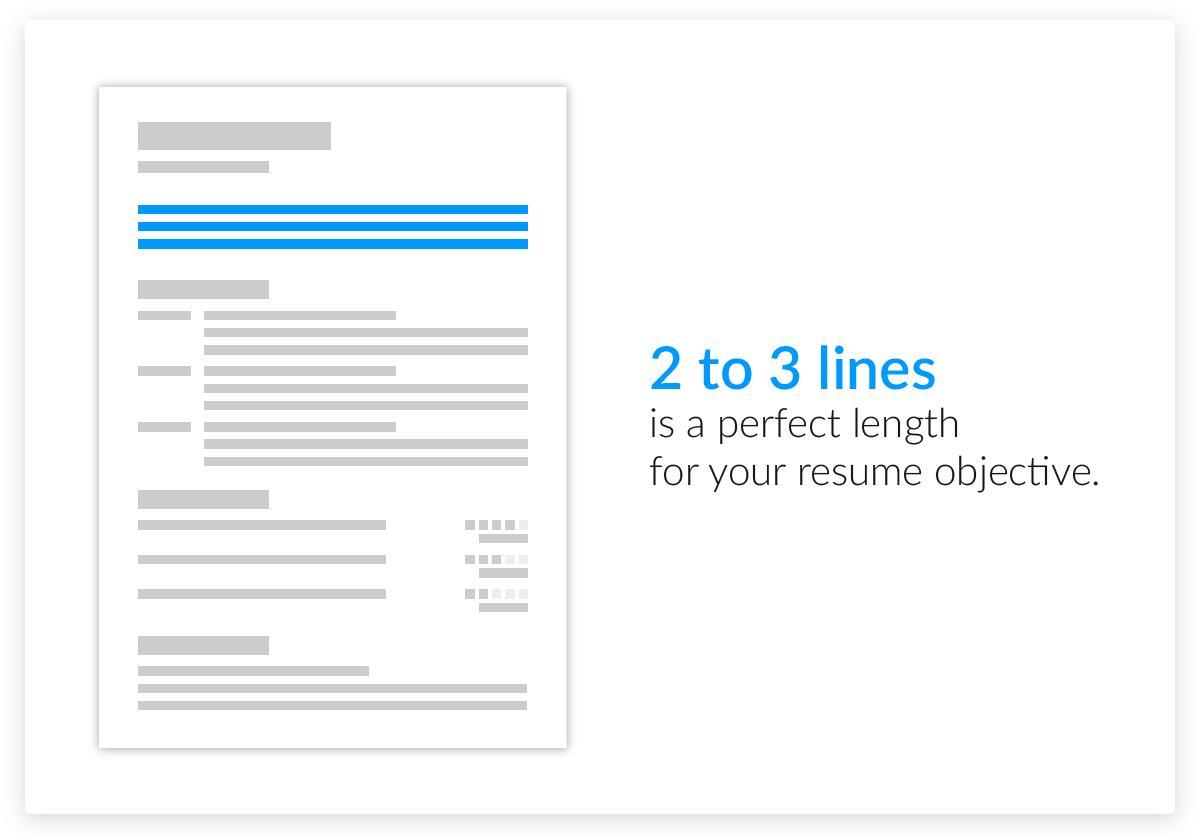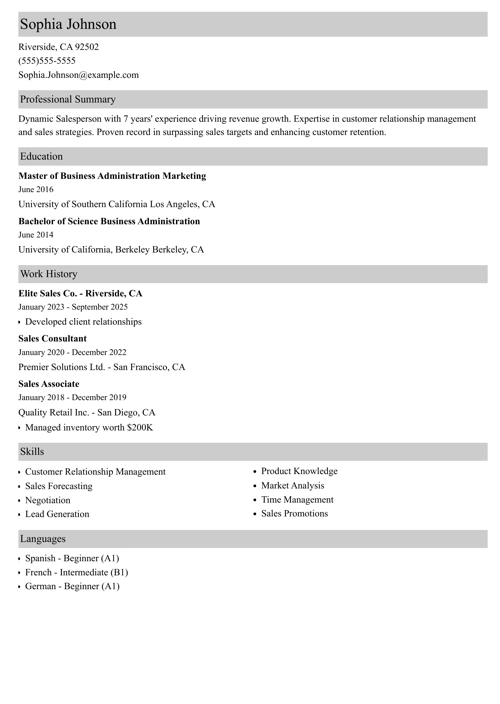Outlines for resumes are like blueprints for houses: make one mistake, and the entire thing falls apart. You don't want that to happen to your prospective career! Where do you begin? How do you even make a resume outline? Which sections do you include or skip? Is there a sample you could copy?
This guide won't just help you avoid mistakes in your resume outline. It will help you create just the right outline to build a solid, job-winning resume. Recruiters will beg to interview you!
This guide will show you:
- How to outline resumes from top to bottom, step by step.
- Easy resume outline examples to create the best resumes for every profession.
- How to make an outline for a resume that will land you more interviews.
- Tips and examples of how to create the best resume outline templates.
Want to save time and have your resume ready in 5 minutes? Try our AI resume builder. It’s fast and easy to use. Plus, you’ll get ready-made content to add with one click. See 20+ resume templates and create your resume here.
Sample resume made with our builder—See more resume examples here.
Looking for more guides on writing your perfect resume? Check these guides and examples:
Resume Outline Example
Emery Taylor
Store Manager
123-456-7890
emerytaylor@email.com
linkedin.com/in/emery.taylor
Summary
Goal-oriented Store Manager with over 10 years of experience in high-volume retail environments. Eager to support RetailRise in boosting customer satisfaction scores and sales targets by creating team-oriented environments and implementing cost-saving strategies. Led Store Masters Incorporated to a 20% increase in sales over a fiscal year.
Experience
Store Manager
Store Masters Incorporated, Las Vegas, NV
June 2013–Present
Key Qualifications & Responsibilities
- Overseeing the daily operations of a high-volume retail store.
- Managing a team of 15 employees, conducting regular performance evaluations, and providing coaching and mentoring.
- Developing sales strategies to increase store revenue and customer satisfaction.
- Implementing cost-saving measures to reduce overhead costs by 10%.
Key Achievement:
- Increased sales over a fiscal year by 20% through effective sales strategies and team.
Assistant Store Manager
ShopHub, Las Vegas, NV
May 2010–June 2013
Key Qualifications & Responsibilities
- Assisted the Store Manager in managing and coordinating all store operations.
- Provided excellent customer service, resulting in a significant increase in customer retention.
- Conducted inventory management and maintained accurate stock levels.
Key Achievement:
- Developed and implemented an inventory tracking system, reducing item stockouts by 30%.
Education
Bachelor of Business Administration
University of Nevada, Las Vegas
September 2006–May 2010
Skills
- Inventory Management
- Budgeting and Finance
- Team Leadership and Training
- Customer Service
- Retail Sales
- Interpersonal Communication
- Conflict Resolution
Certifications
- Certified Retail Store Manager, NRF Foundation, 2016
Awards
- 2018, Best Store Performance, Store Masters Incorporated
Languages
- English—Native
- Spanish—Intermediate
Interests
- Reading business and leadership books.
- Participating in local community events.
What Is a Resume Outline?
A resume outline is a content and layout plan you make before starting to write a resume. The outline for a resume determines what items you’ll list in your work experience, education, skills, and profile sections in order to best match the requirements of the job description.
There’s plenty to think of when writing your resume. But outline shouldn’t be one of those things.
Our templates already have the perfect resume outline, and all you have to do is simply pick the right one for you. See some examples of the Zety resume templates right below:
Resume Outline: Primo
You see it, don’t you? Everything is so clear. The recruiter will know exactly where to find what they’re looking for and make a quick decision to invite you for an interview. Plus, the soft play with color is perfect for a professional resume.
Resume Outline:Cascade
With Cascade, you strike the perfect balance between confidence and expertise. The color adds to the former by highlighting your skill set, while the lighter column draws justified attention to your accomplishments from work and academics.
Resume Outline: Cubic
The Cubic template presents a professional resume outline in a two-column format. As we read from left to right, your recruiter has immediate access to the most important information: your summary or objective and professional experience.
Resume Outline: Muse
A resume outline shouldn’t be complex. I dare say it should even be too easy to gauge. And the Muse template is precisely that; it makes the resume headline pop with a clear line division that separates the sections.
Resume Outline: Crisp
Crispy bacon and eggs—the ultimate breakfast. Our Crisp template is deliciously perfect, too. The icons and skill rating add a youthful vibe, and you still have plenty of room to write how amazing you did in your previous jobs.
1. Contact Information & Personal Details
I don’t need to explain to you why contact information is necessary on a resume, right? However, not all of it is a must. Let’s look at the choices that go in this section now:
Necessary
Name: First name then last (middle name optional).
Phone Number: Personal cell phone. You want the recruiters to reach you, right?
Email Address: This is any business’ preferred means of communication. Make sure you use a professional one, not your middle school address:
| right | wrong |
|---|---|
eliza.bartlesby@gmail.com | mizzlizzthewizz@hotmail.com |
Recommended
LinkedIn URL: Include your LinkedIn profile URL to give them a better idea of what you have to offer professionally.
Optional
Mailing Address: Sounds old-school, but many employers still send offers & rejection letters via snail mail. Also, jobs that prefer local candidates may rather choose applicants from specific locales.
Title: Your career title or branding statement, like a catchphrase.
Social Media: Only if they are related to the job. Are you a designer? Perhaps link to your Behance. Likewise, link to your Github if you’re in IT and have made great contributions.
Blog/Website: Got a website, portfolio, or blog? Are they relevant? Add its URL to your personal info section to show it off!
Skip things such as your date of birth - it could subject you to ageism, whether it’s a resume outline for internships or for your 15th job.
Pro Tip: Remember that your mailing address might differ from your home address! When writing your resume outline, include the one where you collect mail.
Need more on how to set up a resume outline’s contact section? Want simple resume outline examples of adding your personal info? See this: “How to Include Contact Information on a Resume (Examples)”
2. Heading Statement (Resume Objective/Summary)
It only takes 7 seconds for recruiters to make up their mind if they want to read your whole resume, according to our HR statistics report. Furthermore, there are hundreds of resumes landing on your recruiter's desk. How to distinguish yours from them?
You have to get them hooked from the get-go.
This is where the heading statement comes in. All the best resumes have one.
There are two general options: the resume summary and the resume objective. They go on top, right next to your contact info.
Resume Summary
On your resume outline, choose the resume summary if you seek a position in a job which you have experience in. The resume summary will summarize your job-related skills and qualifications for the position.
Want ideas and examples on how to do a resume summary? Check out our guide: “How To Write A Resume Summary: 21 Best Examples You Will See”

Resume Objective
Have no job experience, or at least no experience related to the job you’re applying for?
No worries! Choose the objective for your resume outline. Here, you’ll highlight transferable skills from other areas and make the case that though you don’t have experience with this position, you do have experience relevant to it.
Making a resume with our builder is incredibly simple. Follow our step-by-step guide, use ready-made content tailored to your job and have a resume ready in minutes.
When you’re done, our AI resume builder will score your resume and our resume checker will show you exactly how to improve it.
Need more advice and examples on how to make outline resume objectives? Take a look at this one: “20+ Resume Objective Examples - Use Them On Your Resume (Tips)”
Want to say even more? Then make the perfect resume outline worksheet, land the job, and then you can talk to them all you want!
3. The Resume’s Experience Section
Great, we’ve warmed up, stretched, and our resume outline juices are flowing. Now it’s time to get down to the nitty-gritty: your professional experience section. There are two different paths we can take here, depending on your experience:
Experienced?
Have experience related to the job you’re applying for? Did you opt for the resume summary above? If yes to one or both questions, then let’s stick with reverse-chronological resume format.
We’ll list your last job, dates in the position, city/state/country, and a bulleted list of tasks and achievements which you’ll curate to impress the hiring manager.
Pro Tip: People often use this section just to itemize tasks they performed in each position, but these don’t say much to the employer. Add quantifiable achievements that will show them you’re the one, like in the above example.
Need more tips and advice on how to complete your resume’s experience section? Take a look at this post: “How to List Work Experience on Your Resume [+20 Examples]”
Got more experience? Repeat the above steps to add the job that came right before your last - this is why we call this reverse-chronological, after all.
Got a third job? Repeat again! However, let’s wrap this up here, or soon after - we don’t want this to get too long.
Little or No Experience?
Have little or no experience related to the particular job to which you are applying? Did you choose to use the resume objective as your heading statement?
If you answered “yes” to one or both of these questions, then we’ll choose a simple resume layout that gets the job done.
Like the reverse-chron, you’ll still list past experience in reverse-chronological order. But, instead of listing duties and responsibilities, you’ll highlight relevant skills and achievements from past jobs by featuring them in bullet points.
Want more examples of how to add your proud achievements to your resume outline? Check this one out: “Achievements to Put on a Resume - Complete Guide (+30 Examples)”
Also, like the reverse-chron, you can repeat once or twice to add more previous positions, but not too many so that their eyes glaze over.
Either Way...
- Don’t just lists tasks you were responsible for - this was your job and doesn’t state how well you did them.
- Use action verbs and more descriptive resume keywords to bring out the flavor.
- Add an achievement or two with quantifiable numbers for the win.
Not entirely sure about which is the proper resume format for you? See our guide: "3 Resume Formats: How to Choose the Best One [Examples]"
4. The Education Section on Resume Outlines
Think the education section is outdated? Think again. Most job recruiters require insight into your education on a resume. Many job listings also include a minimum education requirement.
So, don’t leave education off of your resume outline. List these items to round out an education section entry on the resume outline for university students:
Still in college and working on your degree? No worries! Follow the same styling above, but add a line for “expected completion date.”
On a resume outline for high school students, style it the same way, but skip your high school if you have higher education to list.
Pro Tip: Beware! Listing your GPA is an optional choice, and if it’s too low, then it may hurt your job seeking chances instead of help!
Want more education section examples, resume coursework, and other scenarios for your resume outline? See this article: “How to Put Your Education on a Resume [Tips & Examples]”
5. Adding Your Best Skills & Unique Qualifications
Before you just start jotting anything down, willy-nilly, let’s take a look at the job listing that you’re interested in again. Now, we need to find things that match their interests.
I mean, think about it: do you want food for dinner tonight? Or do you particularly crave a filet mignon cooked medium-rare?
The company you want to join is looking for specific skills, too: your knowledge of Adobe Photoshop CC rather than just photo-editing software, for example.
Many people just have a bulleted list, like this:
- Skill #1
- Skill #2
- Skill #3
Pro Tip: Another method of quantifying your skills is by using a star rating system instead of the bar graph like in the example above.
Want more examples of how to list skills on your resume and resume outline to make the recruiter scream, “Hired!”? Check this out: “30+ Best Examples of What Skills to Put on a Resume (Proven Tips)”
6. Other Sections on Your Resume Outline
You’ve got the essentials now, but so does everyone else.
Let’s really highlight your uniqueness for the job by adding extra sections to your basic resume outline:
- Languages: Know another language? That could be very helpful; don’t forget to note this in your resume outline.
- Volunteer Work: Have volunteer experience? Making a resume section for this could be beneficial and relevant to your job application.
- Freelance Work: Any jobs done part of the gig economy matter. Any experience is better than no experience. This can even include part-time and personal projects.
- Certifications: Did you earn some kind of certification at your last job (e.g., safety, food prep)? That could definitely be useful in this next job.
- Hobbies & Interests: This section is completely optional, but it could help to showcase the human side of you. If you studied the manager and saw she likes baseball, too, it could be a way to catch their attention!
- Awards & Commendations: Were you awarded a high rating or award at your previous job? That sounds like something proud to put on any resume.
Pro Tip: Skip the ancient practice of adding a reference section on a resume - of course your “references are available upon request.”
Want more examples of hobbies and interests which work well on general resume outlines? Not sure if you want to add extra sections to your blank resume outline? Read our guide: “20+ Best Examples of Hobbies & Interests To Put on a Resume (5 Tips)”
Plus, a great cover letter that matches your resume will give you an advantage over other candidates. You can write it in our cover letter builder here. Here's what it may look like:
See more cover letter templates and start writing.
Key Takeaway
Creating a resume might seem more complicated than constructing your dream home, at first. But if you take the time to create a resume outline, it’ll be easy-peasy.
- Contact Info - There are many ways to reach you, but don’t list them all. Use a phone number that you’ll answer and an email address that looks professional.
- Experience - On your resume outline, experience is great, but make sure to add quantifiable achievements that the employer can relate with.
- Other Sections - There are many other sections that you can add, but choose the ones that are right for you and for the particular job you’re applying for.
By following the steps listed here to create your outline of resume sections, you’ll have an outline that will be a valuable stepping stone towards your next dream job.
About Zety’s Editorial Process
This article has been reviewed by our editorial team to make sure it follows Zety's editorial guidelines. We’re committed to sharing our expertise and giving you trustworthy career advice tailored to your needs. High-quality content is what brings over 40 million readers to our site every year. But we don't stop there. Our team conducts original research to understand the job market better, and we pride ourselves on being quoted by top universities and prime media outlets from around the world.









